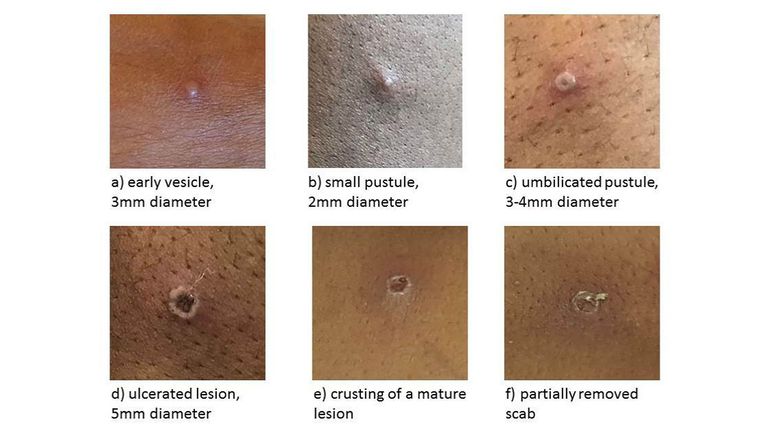[ad_1]
Exactly what’s driving the UK’s largest-ever outbreak of monkeypox is a mystery.
Normally the disease is sporadic and linked to travel to parts of Africa where it is endemic.
But it’s now clear that the virus is spreading within the UK, and many cases are likely to be going undetected.
Here’s what we know.
The outbreak is of the West African sub-type of the virus, which causes generally mild symptoms including a fever, muscle aches and pains, and a rash that blisters and then scabs over.
In Africa it’s usually spread by rodents – it doesn’t transmit easily between people.
But while the first case, reported on 5 May, was in someone who had recently returned from Nigeria, the others have no travel history.
There are nine people known to be infected so far, all but two in London, according to official figures released on 18 May.
Two of the cases live together, but there’s no direct contact between the rest.
And there is a separate cluster of cases in gay, bisexual and other men who have sex with men.
But all that leads to lots of questions.
Unlikely that monkeypox is being sexually transmitted
There must be more cases below the radar that link those known to be infected.
For the disease to have spread so far, it’s quite likely that the cases we know about are outnumbered by those currently undetected.
Some people have also asked whether the virus is being sexually transmitted because most cases so far are in gay and bisexual men.
That doesn’t seem likely – it hasn’t been identified as a means of transmission in the past.
It’s more likely that prolonged and intimate skin to skin contact is spreading the virus.
And the cluster in men who have sex with men may just be an unlucky accident – one of the unidentified cases may just happen to be gay or bisexual and perhaps had multiple partners.
It’s something the epidemiological detectives at the UK Health Security Agency will be trying to work out by contact tracing.
You certainly can’t infer that someone with monkeypox acquired it through sexual contact. Nor can you infer their sexuality.
Parallel outbreaks in Europe are puzzling
Another unusual aspect of the current situation are the parallel outbreaks in Spain and Portugal.
It’s not known whether they are linked to what is going on in the UK or whether there have been multiple introductions of the virus from West Africa.
It’s all a bit of a puzzle.
Fortunately, the cases are expected to make a full recovery after two or three weeks.
But there is some evidence from the past that children get more severe symptoms, so public health teams are trying to shut down the virus’s spread as quickly as possible.
Read more:
How do you catch it, what are the symptoms, and how easily does it spread?
Anyone concerned about possible symptoms are being asked to come forward for a check-up.
And doctors are also dusting off vials of the smallpox vaccine, which hasn’t been used routinely in the UK since 1971.
The two poxviruses are related and the jab should protect close contacts with monkeypox cases, helping to stop further spread.
This isn’t another COVID. But the outbreak of monkeypox is unusual. And a good lesson to learn from the pandemic is not to let viruses that originate in animals spread in humans unchecked.
[ad_2]




